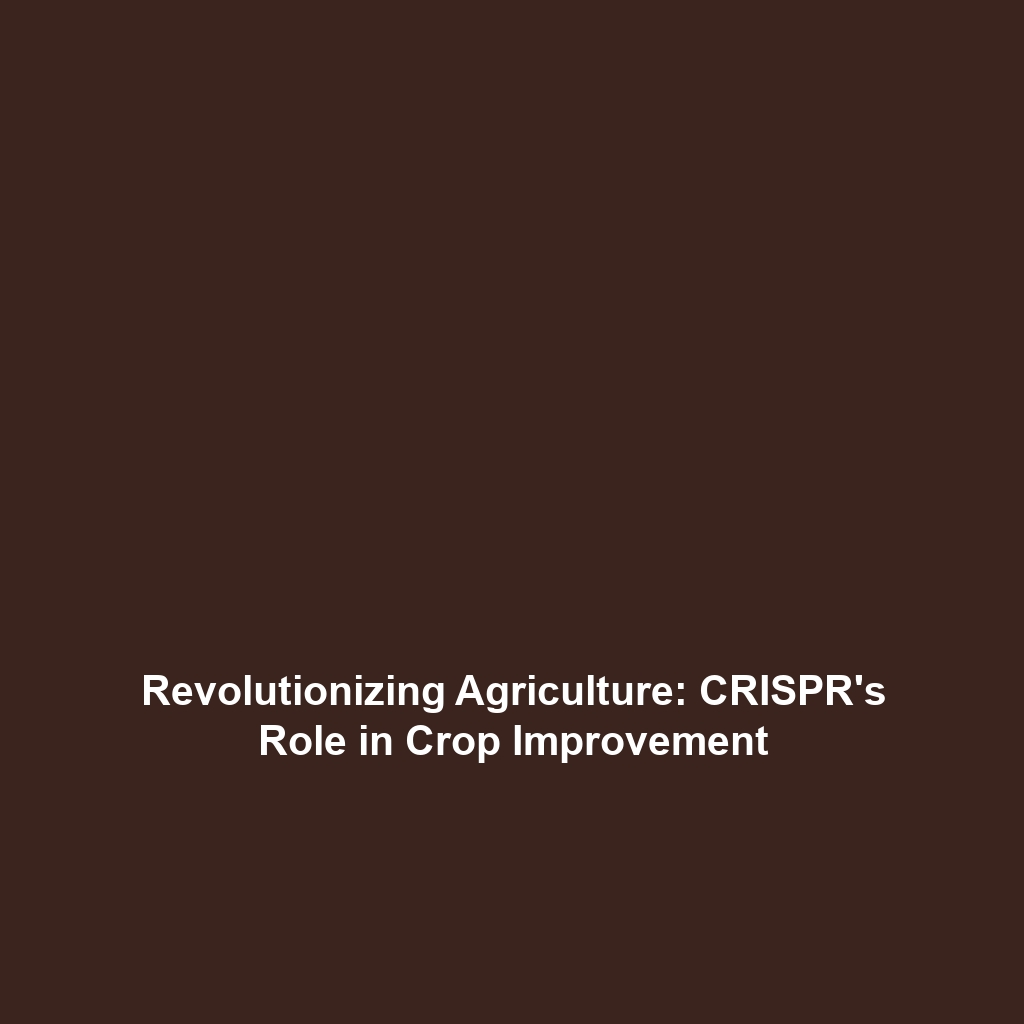Crop Improvement: How CRISPR is Being Used to Enhance Crop Traits
Introduction
Crop improvement is pivotal to addressing global food security, and CRISPR gene editing technology is leading this revolution. By permitting precise modifications at the genetic level, scientists can enhance crop traits such as yield, pest resistance, and climate adaptability. The significance of CRISPR gene editing within the agricultural sector cannot be overstated, as it offers a sustainable approach to improve the genetic makeup of plants. This article explores how CRISPR is being utilized to enhance crop traits, emphasizing the potential for increased agricultural productivity and resilience in the face of environmental challenges.
Key Concepts
Understanding the principles behind CRISPR technology is essential for grasping its role in crop improvement. Key concepts include:
- CRISPR-Cas9 System: A groundbreaking method allowing for targeted DNA editing, facilitating the modification of specific genes associated with desirable crop traits.
- Gene Editing vs. Traditional Breeding: Unlike traditional breeding methods, CRISPR allows for the direct alteration of genetic material, reducing the time and resources needed to develop improved crop varieties.
- Trait Enhancement: The ability to improve crop characteristics, such as nutrient content, disease resistance, and drought tolerance, through precision editing.
Applications and Real-World Uses
The applications of CRISPR technology in crop improvement are vast and transformative. Here are notable real-world uses:
- Disease Resistance: Researchers have successfully used CRISPR to develop crops resistant to common diseases, such as bacterial blight in rice and late blight in potatoes.
- Nutritional Enhancement: CRISPR is employed to increase the nutritional value of certain crops, such as biofortified rice with elevated levels of vitamins and minerals.
- Stress Tolerance: CRISPR has been utilized to create crops that can withstand extreme environmental conditions, including drought and salinity, crucial for maintaining agricultural productivity in changing climates.
Current Challenges
While the potential of CRISPR in crop improvement is immense, several challenges remain:
- Regulatory Hurdles: Navigating the regulatory landscape for genetically edited crops can be complex and varies significantly across countries.
- Public Perception: There is still skepticism regarding genetically modified organisms (GMOs), which can impede public acceptance of CRISPR-modified crops.
- Technical Limitations: Off-target effects, where unintended parts of the genome are altered, pose risks that need to be carefully managed.
Future Research and Innovations
The future of CRISPR gene editing in crop improvement is ripe with possibilities. Innovations on the horizon include:
- Next-Generation Sequencing: Enhanced sequencing techniques could allow for better identification of genomic targets, increasing the precision of CRISPR applications.
- Gene Drive Technologies: These could facilitate the rapid spread of beneficial traits through populations, greatly enhancing crop resilience.
- Multi-Trait Editing: Future research is likely to focus on editing multiple genes simultaneously, providing a way to improve several traits in a single crop variety.
Conclusion
In summary, CRISPR gene editing is revolutionizing crop improvement, offering unprecedented opportunities to enhance crop traits. By overcoming existing challenges and exploring innovative applications, researchers can significantly contribute to global food security. For those interested in further dive into related topics, consider exploring our articles on the future of genetic editing and technology in agriculture.
